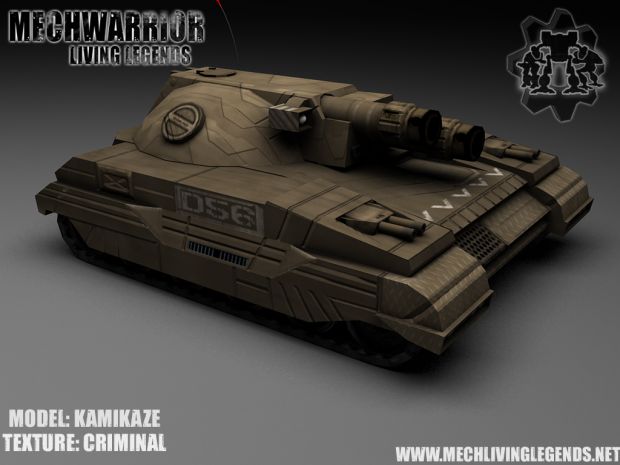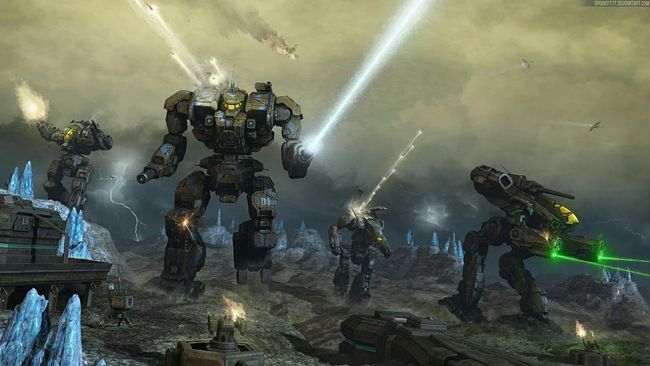
Battletech Mechs
BattleTech Mechs Weapons - Do's and Don'ts. Let’s talk for a bit about the types of weapons you have available in BattleTech, and the trade-offs for each one. There are three main categories of weapons (plus support weapons, which I consider a special class), and each has its own set of pros and cons. Pages in category 'BattleMechs' The following 200 pages are in this category, out of 644 total. (previous page).
Contents.Origins BattleMechs debuted in 's, a board game of futuristic armored combat played with, counters and paper record sheets on a. The game's first edition in 1984 was titled BattleDroids and featured mecha based directly on those in the Japanese animated television series and other from the late '70s and early '80s. Legal impediments with over the use of the term 'droid' forced the name of the game to change in the second edition to BattleTech. This, combined with legal troubles with, led FASA in the 1990s to remove all images of these early designs from subsequent published material. Since FASA retained the rights to all aspects of the 'Mechs except for their visual depictions, they continued to use the 'Mechs and their stats, but did not print images of them until Technical Readout: Project Phoenix canonized new artwork for the designs.
This fact led fans to dub these early 'Mechs the 'Unseen,' while their new look is colloquially referred to as the 'Reseen.' 'Mechs in BattleTech vary from one another in many ways, including mass, speed, chassis configuration, armor and armament, resulting in a practically limitless array of legal 'Mech designs. FASA and its successors, and created hundreds of official BattleMechs to complement the game, the majority published in a long-running series of 'technical readouts'. The game's detailed construction rules, which allow players to create legal custom units of their own, has also resulted in untold thousands of additional designs, some published in magazines, on websites, and in various other fan media.As the BattleTech franchise has grown, BattleMechs have increasingly appeared beyond the confines of the board game.
A line of figurines, a collectible card game, and numerous computer simulation titles feature the machines; 'Mechs also feature centrally in a prolific series of set in the fictional BattleTech universe, as well as an animated spin-off television series.Backstory In the BattleTech universe, the first BattleMech ever developed was the Mackie MSK-6S, described as a 100-ton box with legs. It was developed in 2439 by the, first deployed in 2443, and produced throughout the rest of the after its construction plans were stolen in 2455. Significant development and refinement of the technology followed through subsequent centuries.' Mech advancement in the crested during the reign of the, but slowly degraded during the protracted conflicts of the. Much of the infrastructure and expertise necessary to produce the most advanced models was lost, with the result that, by the early 31st century, most Great Houses were fielding models that were centuries old.Star League-era BattleMech technology was preserved during this period of decline by a military faction later known as. Absent from the Inner Sphere for centuries, they returned in 3049 fielding 'Mechs of considerable sophistication and power. The first confirmed sighting of a Clan 'Mech by an Inner Sphere observer was that of a Timber Wolf (called the Mad Cat by Inner Sphere observers) by the legendary Phelan Kell of the Kell Hounds mercenary unit.The Clan invasion triggered a resurgence of BattleMech-related research and development, both in the Inner Sphere and among the Clans, leading to many new models being introduced during the 3050s and '60s.After the collapse of the in late 3067, most Battlemech manufactures were damaged or outright destroyed by the (Holy War).
Smaller factories retooled and began manufacturing ancient designs dating back to the Age of War when Mackie was first introduced.The creation of hybrids from these ancient designs and new technologies again led to a slow progress in 'Mech development, despite the return to all-out war and the use of nuclear weaponry.However, the collapse of the network in the early 32nd century disrupted 'Mech advancement.Terminology and nomenclature The term 'Mech' broadly applies to all mecha within the BattleTech universe. BattleMechs, those that are intended for combat or related operations, are the predominant variety, with the result that the term is frequently applied to all BattleTech mecha. Non-combat models do exist, however, and are generally referred to as WorkMechs or UtilityMechs. These models tend to be specialized to perform a particular task such as harvesting, lumbering, scavenging, repair, etc.OmniMechs are a sub-class of BattleMech that mount weapons and equipment in modular 'pods'. The pods are easily swapped or changed, enabling engineers to customize an OmniMech's components for any given mission.With few exceptions, every major model of BattleMech bears both a name and an identifying code.
Codes generally use letters from the 'Mech's name, followed by an alphanumeric reference to the submodel or variant. For example, the base model of the 70-ton Warhammer is WHM-6R, with variants WHM-6X, WHM-7A, etc. A single letter is normally used to indicate common variants of an OmniMech.Clan 'Mechs are sometimes known by two different names, one assigned by its Clan creators and one by Inner Sphere observers.
An example is the 75-ton Clan Timber Wolf, known in the Inner Sphere as the Mad Cat. This practice generally ceased after the mid 3060s.Configuration BattleMechs range in height from 7 to 17 meters (23 to 56 feet) and mass from 20 to 100 (22 to 110 ) in five-ton intervals, with some capable of ground speeds in excess of 150 km/h (93 mph).
Mechs have a torso that can rotate to either side independently from the legs, but few can do a complete 360 twist. Their power is drawn from and are best suited for ground combat, although they are also capable of limited performance and in.Bipedal The majority of BattleMechs are and can be classed as either humanoid or reverse-joint (').

Humanoid-type BattleMechs are the most common and include the iconic Atlas and Summoner ( Thor). Reverse-joint 'Mechs are slightly less common on the field of battle, being quicker but less stable than the humanoid-typebut include such famous models as the Supernova, Marauder, Catapult, Timber Wolf ( Mad Cat) and the Dire Wolf ( Daishi). There are a few, however, with legs that have a raised ankle and stand on their toes, like the legs of a dog, cat, etc. Examples include the Thanatos and Nova Cat.Quadrupedal Four-legged 'quad' 'Mechs constitute a small segment of official designs, and while they lack the flexibility and speed of bipedal designs, they are considerably more stable and can mount heavier weaponry. Though often maligned, quads experienced a bit of a renaissance in the years after 3060 with several new models released. Notable quad designs include the 25-ton Tarantula, 55-ton Scorpion, and 70-ton Barghest.Land-Air 'Mech (LAM) LAMs are an extremely uncommon form of 'Mech capable of transforming between BattleMech and aircraft configurations, an ability that conveys great speed and flexibility at the cost of power and protection.
The design of these LAMs, as well as several other 'Mechs, were leased from mecha designs used in and other series (see ); resulting real-world legal conflicts ended their official existence within the franchise. The Wasp, Stinger and Phoenix Hawk are the only published LAMs, found in the unrevised edition of Technical Readout: 3025, along with the other 'lost' or 'unseen' BattleMechs such as the Marauder, Crusader, Warhammer and the non-LAM versions of the Stinger, Wasp, and Phoenix Hawk.BattleMech construction BattleMechs are initially made up of a series of internal structure 'bones' which are connected together to form the skeleton of the 'Mech.
An called myomer, which contracts in the presence of an electric current, is then wrapped around these bones. This powerful myomer transmission system is what gives BattleMechs their speed and agility in even the roughest terrain.The necessary electric current for the myomers is provided by a fusion reactor mounted in the torso. This artificial skeleton and musculature combined with a powerful provide stability for the BattleMech. The entire system is controlled by a pilot wearing a that effectively links the 'Mech's central computer to the pilot's sense of balance.
The neurohelmet also gives feedback by providing a kinesthetic sense of the mech's position for better judgement of balance. The movement of a 'Mech is controlled by a combination of throttle, and dual pedal system.All 'Mechs include a cockpit, life support, sensors, engine, gyroscope, and actuator packages.
Any space left over after accounting for these components, as well as upgrades to the structure (Endo-steel) and armor (Ferro-Fibrous), may be used for heat sinks, weapon systems, ammunition, or other legal equipment.' Mechs can carry a variety of weapons, most of which generate heat upon firing. This can become a problem in intense or prolonged fighting, as an overheating 'Mech may shut down or, in extreme cases, explode. To mitigate this, the heat is transferred into massive, which help facilitate cooling but do not eliminate the problem entirely. Water is an effective coolant, but impairs movement.
Based upon the strategy war game and set during events in the Blood of Kerensky Trilogy by Michael Stackpole, a small independent unit lead by Maj. Adam Steiner fights their way to their home planet of Somerset when news of an army of mysterious invaders calling themselves the Clans begin to conquer world after world in their ultimate goal to take Terra. The First Somerset Strikers, as the unit is called, is assigned to take the fight to the Clans and learn as much of the invaders as they can, all the while being pursued by an obsessive Clan Jade Falcon warrior named Nicholai Malthus. TriviaThe Mauler, frequently seen in the series, is used erroneously. The original source states that the Mauler was an experimental Battlemech built in the Draconis Combine, and seen far too frequently in the possession of the Combine's long time rivals in the Federated Suns. This is presumably due to budget limitations.
The series uses only a few designs throughout the entire series. (Mauler, Wolfhound, Centurion, Awesome and Bushwacker for the Inner Sphere, and the Timber Wolf (Mad Cat), Mad Dog (Vulture), Hunchback IIC and Summoner (Thor) for the Clans). I remember watching this show when I was a kid. Me and my friend would wake up really early just to watch it. We we always into Mechwarrior, the RPG and the video game on the SNES.
From what I can remember about the show was very limited. I remember it was talking about Clan Jade Falcon attacking Summerset, and that the main character had an Axmen Mech, that was stolen by a bad guy (I think). That was about all I remember from the show. After downloading all the episodes off of the internet, I began to remember all of them.
Warlight michael ondaatje summary. I now remember loving the 3D portion of the show. Me and my friend thought it was so cool when it was in the 3D mode.
That was the fist cartoon that I ever remember using that technology. Well, anyways, even all these years later, it is still a really good show. I still cant believe that they only made 13 episodes. Maybe being a kid, those 13 episodes turned into 50 episodes for me because all I remember is just loving every moment it was on TV.
This app contains paid in-app purchases. This app requires an internet connection, data rates may apply. All Rights Reserved.© Imagineer Co., Ltd. Zombiewood mod apk 2018. Check your internet provider for details.© 2019 San-X Co., Ltd.